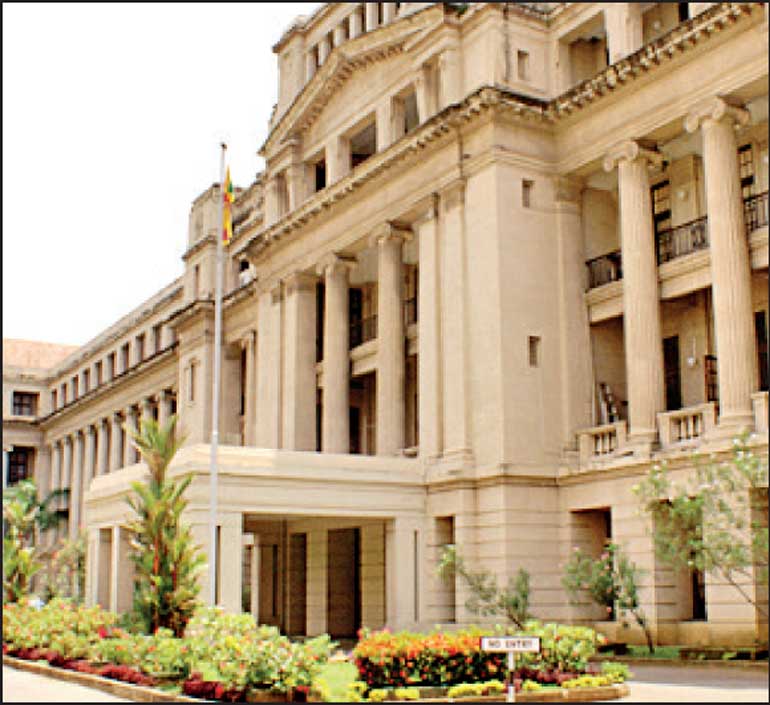Tuesday Dec 16, 2025
Tuesday Dec 16, 2025
Tuesday, 28 October 2025 00:00 - - {{hitsCtrl.values.hits}}
 Sri Lanka plans to raise $ 11.26 billion through Sovereign Green and Blue Bonds by 2030 to finance renewable energy, biodiversity conservation, and other climate-related projects aligned with its 2050 carbon net-zero target, according to the National Climate Finance Strategy 2025-2030 (NCFS).
Sri Lanka plans to raise $ 11.26 billion through Sovereign Green and Blue Bonds by 2030 to finance renewable energy, biodiversity conservation, and other climate-related projects aligned with its 2050 carbon net-zero target, according to the National Climate Finance Strategy 2025-2030 (NCFS).
The NCFS notes that the Finance Ministry has already drafted a Sovereign Green/Blue Bond Framework and engaged an international rating agency to provide a second party opinion to ensure compliance with international standards.
The strategy was developed with support from the UK Government and the United Nations Development Programme (UNDP) and released last Friday.
Sri Lanka’s participation in the World Bank’s Biodiversity Financing Forum underscored the country’s interest in nature-linked Green Bonds and the potential to unlock capital for sustainable projects.
The strategy highlights that strong private sector participation and oversubscription of recent Green Bond issues indicate growing awareness and appetite among domestic investors, including retail participants.
To build on this momentum, the Ministry plans to align future issuances with the Green Bond Principles set out by the International Finance Corporation (IFC) and to develop a comprehensive Sustainable Bond Framework consistent with the country’s long-term sustainability objectives.
The Ministry is also exploring a Sustainability-Linked Bond Framework to strengthen investor trust and credibility.
The NCFS stresses the importance of transparent reporting on fund allocation and environmental outcomes to meet investor expectations and enhance Sri Lanka’s reputation in sustainable finance.
The NCFS 2025-2030 outlines a phased implementation plan covering the development of a sustainability bond framework, capacity building, project pipeline creation, stakeholder engagement, third-party certification, and risk mitigation.
According to the strategy, successful implementation would position Sri Lanka as a regional leader in sustainable finance, improve its sovereign credit standing, and attract international climate-focused investment for projects such as renewable energy expansion, waste management, and biodiversity protection.
The strategy adopts an organised approach based on international best practices, focusing on crucial areas like adaptation, mitigation, and managing climate-related losses. The central sectors for targeted initiatives include energy, water, and agriculture.
This framework ensures that funding is used effectively and meets global standards. It outlines targeted financial tools and partnerships designed to link available resources directly to specific climate goals, creating a solid foundation for Sri Lanka’s climate financing efforts.
Given the current constraints placed on Sri Lanka’s ability to access international capital markets, the identification of these financing instruments, the financing partners, and the linkages to the outputs will form the country’s Climate Finance Strategy.
The core instruments of Sri Lanka’s NCFS include disaster risk insurance, public-private partnerships for climate action, subsidies for good agricultural practices, and a range of green financing tools such as Green, Blue, and Sustainability-Linked Bonds, as well as green loans.
The plan also prioritises expanding official development assistance and integrating natural capital accounting into national accounts to reflect the economic value of environmental assets.
The strategy further identifies promoting sustainable tourism, introducing entrance fees for conservation financing, and establishing a green revolving fund to support continuous investment in climate initiatives.
It also proposes the use of environmental, social, and governance (ESG) swaps targeting sectors like nature, energy, water, and agriculture, along with the creation of a carbon market to monetise emission reductions and incentivise low-carbon development.